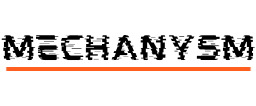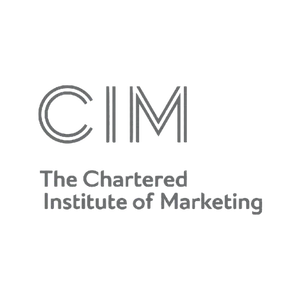Cost per click (CPC), also known as pay per click (PPC), is an essential metric in online advertising that determines the cost advertisers pay for each click on their ads. It is a widely used strategy in digital marketing and plays a crucial role in online advertising campaigns. By understanding CPC and its factors, advertisers can effectively manage their ad budget and achieve their marketing goals.
Key Takeaways:
- CPC is a metric used in online advertising that determines the cost per click on ads.
- Advertisers commonly use CPC with a set daily budget, ensuring they don’t exceed their ad budget limits.
- Factors like bidding, ad quality, and competition can affect CPC rates.
- Improving quality scores, selecting relevant keywords, and optimising landing pages can lower CPC.
- There are various ad types, including text ads, shopping ads, image ads, video ads, and ads on social media platforms, that use CPC.
- CPC can help measure the effectiveness of paid advertising campaigns and determine which ad types generate higher revenue or traffic.
- Advertisers can utilise manual and automated bidding strategies based on their goals.
Now that we have a basic understanding of what CPC is and its importance in online advertising, let’s delve deeper into how it is calculated and managed in Section 2.
How CPC is Calculated and Managed
Calculating CPC involves dividing the total cost of an ad campaign by the total number of clicks, providing advertisers with a clear understanding of the cost associated with each interaction with their ad. This metric, also known as pay-per-click (PPC), is widely used in online advertising, particularly in search engine marketing (SEM). By utilising CPC, advertisers can effectively manage their ad budgets and optimise their ad campaigns.
When setting up an ad campaign, advertisers typically allocate a specific budget for a set period. This daily budget determines how much they are willing to spend on advertising each day. Once the budget is reached, the ad is automatically removed, ensuring that advertisers do not overspend. This way, advertisers can control their advertising costs and prevent any unnecessary expenditure.
Factors such as bidding, ad quality, and competition can influence the cost per click. Advertisers engage in bidding to secure ad placements, as higher bids often lead to better ad positions. Additionally, ad quality is crucial in driving engagement and ensuring relevancy. By improving ad quality, advertisers can increase their click-through rates and potentially lower their CPC. Lastly, competition in the advertising space can influence CPC, as ad auctions determine the prices advertisers pay for clicks.
Effective Management Strategies for CPC
To optimise CPC and achieve desired results, advertisers can implement several strategies:
- Improve quality scores: Quality scores evaluate the relevance and quality of ads and landing pages. By aligning ads with relevant keywords and optimising landing pages, advertisers can improve their quality scores, potentially leading to lower CPC.
- Select relevant keywords: Choosing keywords that accurately represent the products or services being advertised is essential. Advertisers should conduct thorough keyword research to identify the most relevant and high-performing keywords to include in their campaigns.
- Optimise landing pages: A well-designed and user-friendly landing page can significantly impact ad performance. Advertisers should focus on creating compelling content, clear call-to-actions, and optimised page loading speed to enhance the user experience and increase conversions.
| Ad Type | Description |
|---|---|
| Text Ads | Simple and concise ads that appear alongside search engine results. |
| Shopping Ads | Product listing ads that showcase specific products, including images and prices. |
| Image Ads | Visually appealing ads that use images to capture attention and convey messages. |
| Video Ads | Moving visual ads that are displayed before, during, or after video content. |
| Ads on Social Media Platforms | Ads that are displayed on social media platforms target specific audiences based on their interests and demographics. |
Factors Affecting CPC
Several factors can influence the cost per click, including ad quality, competition within the advertising industry, and bidding strategies employed by advertisers. By understanding and optimising these factors, advertisers can effectively manage their ad campaigns and achieve better results.
Ad Quality
The quality of an ad plays a crucial role in determining its cost per click. Search engines and advertising platforms assess the relevance and usefulness of an ad to determine its quality score. Ads that are well-designed and highly relevant to the target audience have a higher quality score, which can lead to a lower cost per click. To improve ad quality, advertisers should focus on creating compelling ad copy, using relevant keywords, and providing a clear call to action.
Competition
Competition within the advertising industry can significantly impact the cost per click. When multiple advertisers are targeting the same keywords or audience, the competition for ad placements increases, leading to higher CPC. Advertisers should keep an eye on their competitors’ strategies and adjust bidding strategies accordingly to stay competitive and avoid overspending on CPC. Conducting thorough keyword research, analysing competitor campaigns, and continuously monitoring market trends can help advertisers stay ahead of the competition and optimise their CPC.
Bidding Strategies
The bidding strategy employed by advertisers can have a direct impact on the cost per click. Advertisers have the option to manually set their maximum bid for each click or use automated bidding strategies that optimise bids based on pre-set goals. Manual bidding allows advertisers to have full control over their CPC, while automated bidding can help maximise ad performance based on specific objectives like maximising clicks or conversions. Advertisers should consider their campaign goals, budget, and target audience when choosing the most appropriate bidding strategy to achieve desired results while managing CPC effectively.
| Ad Types | Measuring Effectiveness |
|---|---|
| Text Ads | Click-through rates, conversion rates |
| Shopping Ads | Revenue generated, product visibility |
| Image Ads | Impressions, engagement metrics |
| Video Ads | Views, completion rates |
| Ads on Social Media Platforms | Engagement, likes, shares, conversions |
CPC is a valuable metric for measuring the effectiveness of paid advertising campaigns. Advertisers can analyse CPC in conjunction with other key performance indicators to determine the success of different ad types. For text ads, click-through rates and conversion rates are important metrics to consider. Shopping ads can be evaluated based on revenue generated and product visibility. Image ads can be measured by impressions and engagement metrics. Video ads can be assessed by views and completion rates. Ads on social media platforms can be evaluated based on engagement, likes, shares, and conversions. By monitoring CPC alongside these metrics, advertisers can make data-driven decisions and optimise their ad campaigns to achieve desired results.
Strategies to Lower CPC
Lowering CPC requires implementing effective strategies such as improving quality scores, selecting relevant keywords, and optimising landing pages to ensure maximum ad performance. By focusing on these key areas, advertisers can reduce their advertising costs and achieve better results.
Improving Quality Scores
A quality score is a metric used by search engines to determine the relevance and quality of an ad. Advertisers can improve their quality scores by creating compelling and relevant ad copy, using targeted landing pages, and ensuring a high click-through rate. By increasing quality scores, advertisers can achieve higher positions in search engine results pages and potentially lower their CPC.
Selecting Relevant Keywords
Choosing the right keywords is crucial in driving relevant traffic to your ad campaign. By conducting thorough keyword research, advertisers can identify the most relevant and high-converting keywords for their target audience. This helps to improve the overall quality of the traffic and can result in a lower CPC. It is important to regularly review and update keyword lists to ensure they remain relevant and effective.
Optimising Landing Pages
Another important factor in lowering CPC is optimising landing pages. By creating landing pages that are user-friendly, visually appealing, and optimised for both desktop and mobile devices, advertisers can increase the chances of conversions and reduce the bounce rate. This leads to a better user experience and can ultimately result in a higher quality score and lower CPC.
| Strategies | Benefits |
|---|---|
| Improving quality scores | – Higher positions in search results – Potential reduction in CPC |
| Selecting relevant keywords | – More targeted and high-converting traffic – Potential reduction in CPC |
| Optimising landing pages | – Better user experience – Increased conversion rates – Potential reduction in CPC |
By implementing these strategies, advertisers can improve the performance of their ad campaigns and achieve better results. It is important to continuously monitor and analyse the effectiveness of these strategies to ensure ongoing optimisation and success in lowering CPC.
Measuring Effectiveness and Bidding Strategies
CPC serves as a valuable metric to measure the effectiveness of paid advertising campaigns, allowing advertisers to determine which ad types generate higher revenue or traffic and to implement manual or automated bidding strategies accordingly. By analszing CPC data, advertisers can make informed decisions on where to allocate their ad budget and optimise their ad campaigns for better results.
When it comes to measuring effectiveness, advertisers can use CPC to evaluate the performance of different ad types. For example, text ads may have a lower cost per click but generate a higher click-through rate, while image ads may have a higher cost per click but a better conversion rate. By comparing the CPC of various ad types, advertisers can identify which ones are more cost-efficient and align with their marketing objectives.
In addition to measuring effectiveness, bidding strategies are crucial in optimising CPC. Advertisers have the option to manually set their bids or utilise automated bidding strategies provided by advertising platforms. Manual bidding allows advertisers to have full control over their bids, enabling them to adjust their bids based on factors like ad performance, competition, and budget. On the other hand, automated bidding uses algorithms to optimise bids based on predefined goals, such as maximising clicks or conversions. The choice between manual and automated bidding depends on the advertiser’s preferences and goals.
To further enhance CPC performance, advertisers should continuously analyse and refine their campaign strategy. This can involve A/B testing different ad creatives, refining keyword selection, and optimising landing pages to improve ad quality and relevance. By constantly monitoring CPC data and making data-driven adjustments, advertisers can lower their CPC and achieve higher returns on their ad investment.
In conclusion, CPC is a vital metric for measuring the effectiveness of paid advertising campaigns. By analysing CPC data and implementing appropriate bidding strategies, advertisers can better allocate their budget, optimise their ad campaigns, and achieve their marketing goals. It is essential to regularly evaluate ad performance, refine targeting strategies, and optimise landing pages to continually improve CPC metrics and drive better results.
| Ad Type | Cost Per Click (CPC) | Click-Through Rate (CTR) | Conversion Rate |
|---|---|---|---|
| Text Ads | £0.50 | 5% | 2% |
| Image Ads | £1.00 | 3% | 4% |
| Video Ads | £2.50 | 2% | 3% |
Conclusion
In conclusion, understanding and effectively managing CPC is crucial for businesses aiming to optimise their digital marketing strategies and achieve success in online advertising campaigns. By implementing strategies to lower CPC, measuring effectiveness, and employing appropriate bidding strategies, businesses can maximise the value of their ad campaigns.
One of the key factors in managing CPC is improving the quality score. By creating high-quality ads that are relevant to the target audience, businesses can increase their ad rank and lower their CPC. Selecting relevant keywords is also important, as it helps to ensure that the ads are shown to the right audience, leading to higher click-through rates and lower CPC.
Optimising landing pages is another effective strategy to lower CPC. By creating landing pages that are tailored to the ad content and provide a seamless user experience, businesses can improve their quality score and reduce their CPC. It is important to ensure that the landing pages are mobile-friendly and load quickly to maximise conversions.
Measuring the effectiveness of paid advertising campaigns is essential for optimising CPC. By analysing the performance of different ad types, businesses can identify which ones generate higher revenue or traffic. This data can be used to allocate the ad budget effectively and focus on the most successful ad types.
Lastly, choosing the right bidding strategy is crucial for achieving the desired marketing goals. Manual bidding allows for greater control and flexibility, while automated bidding can help save time and optimise CPC based on the advertiser’s specific objectives. It is important to continually monitor and adjust bidding strategies to ensure optimal results.
By understanding and implementing these strategies, businesses can effectively manage their CPC and drive better results in their digital marketing and online advertising campaigns. With a well-optimised CPC, businesses can maximise their ad budget and achieve their marketing goals more efficiently.
FAQ
Q: What is the cost per click (CPC)?
A: Cost per click (CPC) is a metric used in online advertising where advertisers pay a certain amount for each click on their ad. It is also known as pay per click (PPC).
Q: How is CPC calculated?
A: CPC is calculated by dividing the total cost of an ad campaign by the total number of clicks.
Q: How does CPC relate to ad budgets?
A: Advertisers commonly use CPC with a set daily budget, and once the budget is reached, the ad is removed.
Q: What factors affect CPC?
A: Factors such as bidding, ad quality, and competition can affect CPC.
Q: How can I lower my CPC?
A: To lower CPC, it is important to improve quality scores, choose relevant keywords, and optimise landing pages.
Q: How does CPC help measure the effectiveness of advertising campaigns?
A: CPC can help measure the effectiveness of paid advertising campaigns by determining which ad types generate higher revenue or traffic.
Q: What bidding strategies can I use?
A: Manual and automated bidding strategies can be used, depending on your goals and preferences.



